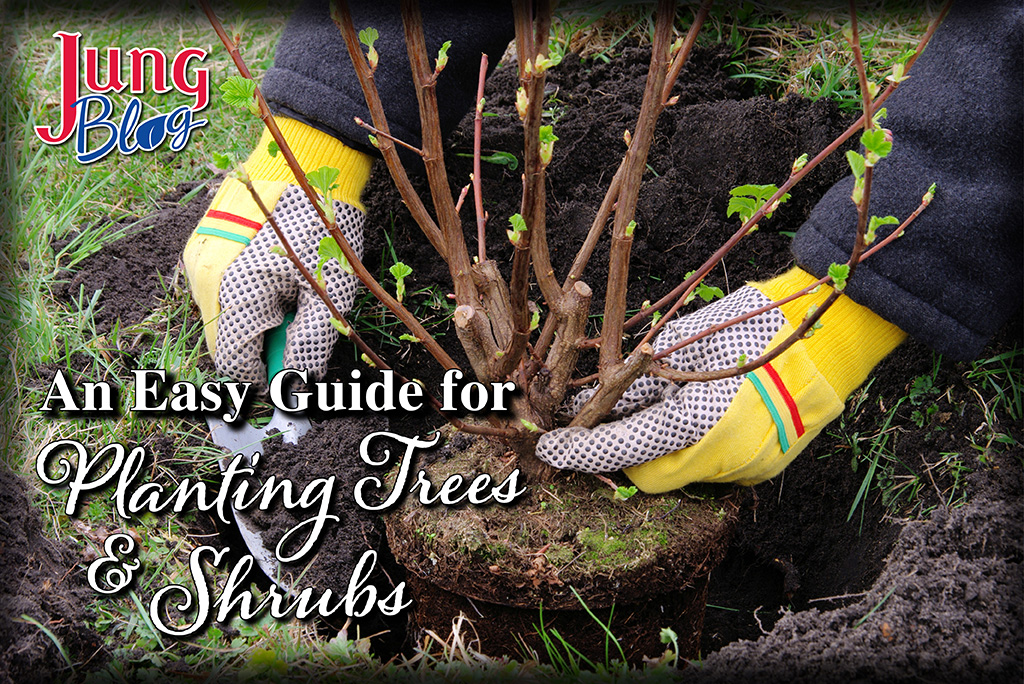
Updated: April 8, 2025
Trees and shrubs can bring structure and beauty throughout the year if you’re starting a new landscape or adding to your existing property. These plants also provide ecological benefits for your landscape and the planet. Before planting, it’s crucial to understand planting techniques to ensure long-term success for your landscape.
Why Proper Planting Is Essential
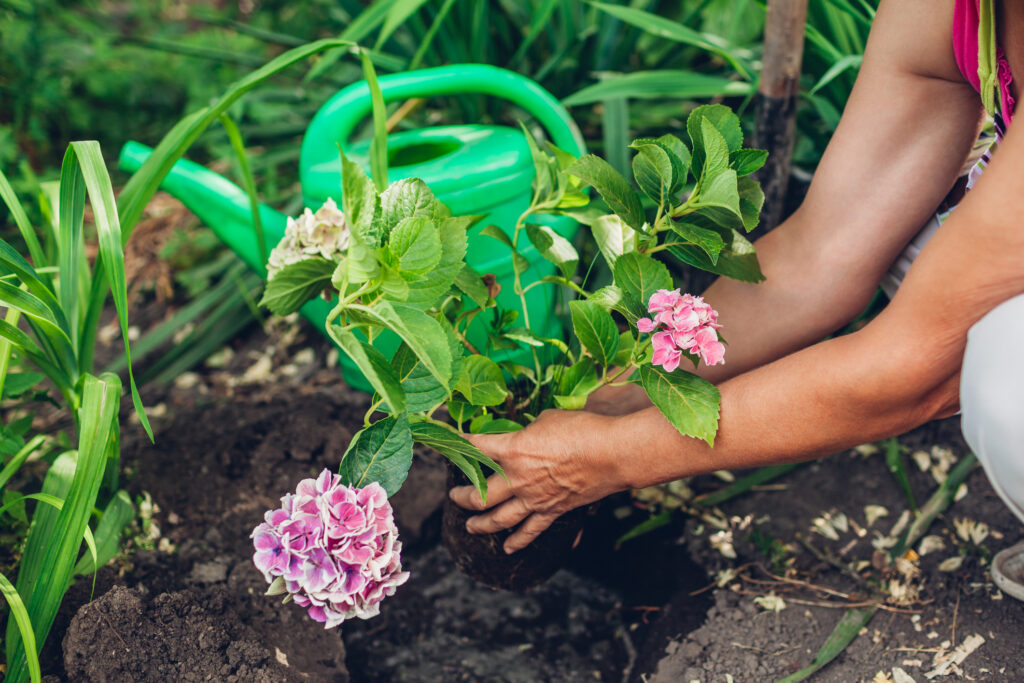
Before we examine the specifics, let’s focus on why proper planting is essential for trees and shrubs. A common problem in landscapes is trees that are planted too deep. As a result, these trees often deteriorate from excess moisture around the stem or develop circling roots that girdle and kill the tree. Planting at the correct depth allows the roots to access water and air while promoting a healthy plant. Location is another key element of planting. Before you plant, you should consider the site characteristics and choose appropriate trees.
As you buy plants from the nursery, you’ll notice a variety of stock, from container-grown plants to bareroot. Each of these products has specific requirements for successful planting. Homeowners commonly plant containers and bare-root plants. Here are things to consider before planting these types of nursery stock.
Planting Bareroot Stock
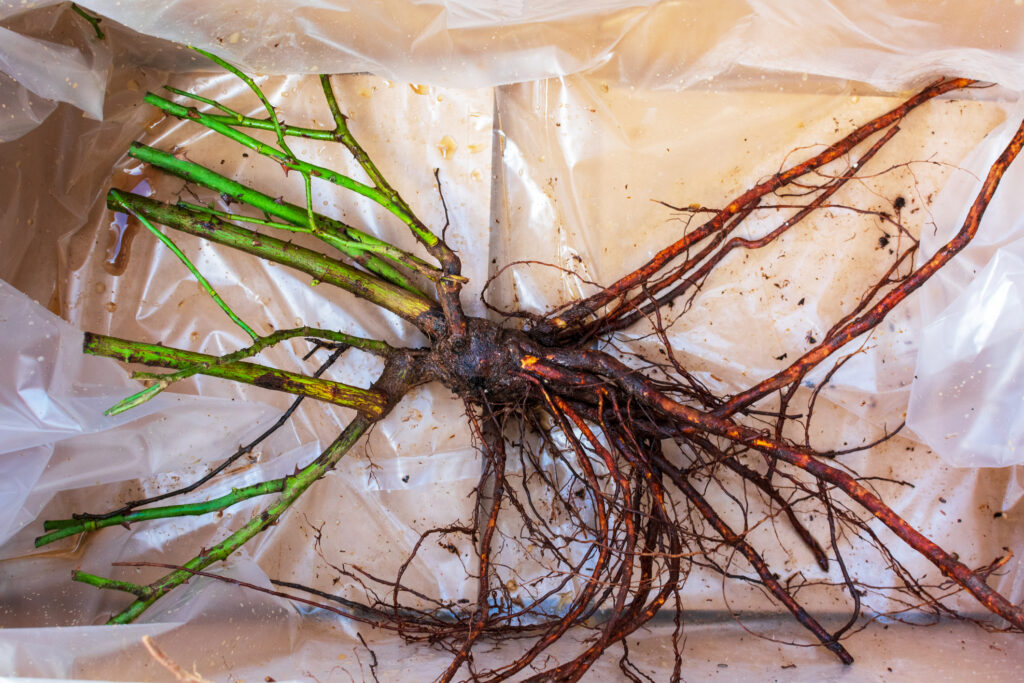
These are usually planted in early spring before growth begins. Before planting, inspect the roots and branches to ensure there’s no damage. You can remove any damaged branches or roots. As you dig the hole, keep it twice as wide as the root mass and no deeper than the trunk flare (Where the roots and trunk intersect).
3 Steps For Planting Bareroot Stock
1. Gently place the plant into the hole and begin backfilling with soil.
2. As you fill the hole, firm the ground every few inches to remove air pockets. You can also water the soil to help it settle as you fill the hole.
3. After you’re finished backfilling, the trunk flare should be about 1″ above the soil surface. During this process, remember to keep the trunk straight.
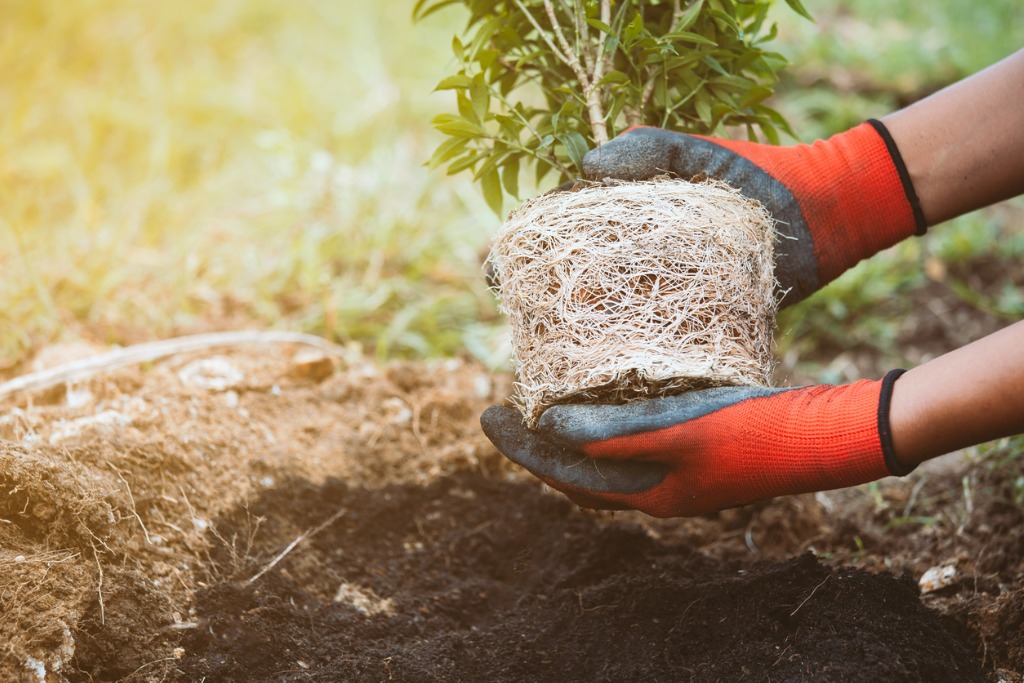
Planting Container Stock
Container plants are planted in spring through fall with an intact root ball. The planting process is like bareroot but with some differences.
3 Steps For Planting Containerized Stock
1. Remove the plant from the container and check the roots. If you notice roots circling the outside of the root ball, the plant is rootbound. To solve this problem, separate the roots to face outward or make vertical cuts on the root ball using a knife. The cuts will break the circling pattern and stimulate new root growth. You can also make a criss-cross symbol on the bottom of the root ball.
2. Place the root ball in the hole, with the trunk flare 1” above the soil level. This is usually the same level the tree was planted in the container.
3. Begin backfilling the hole with soil, firming it every few inches to remove air pockets.
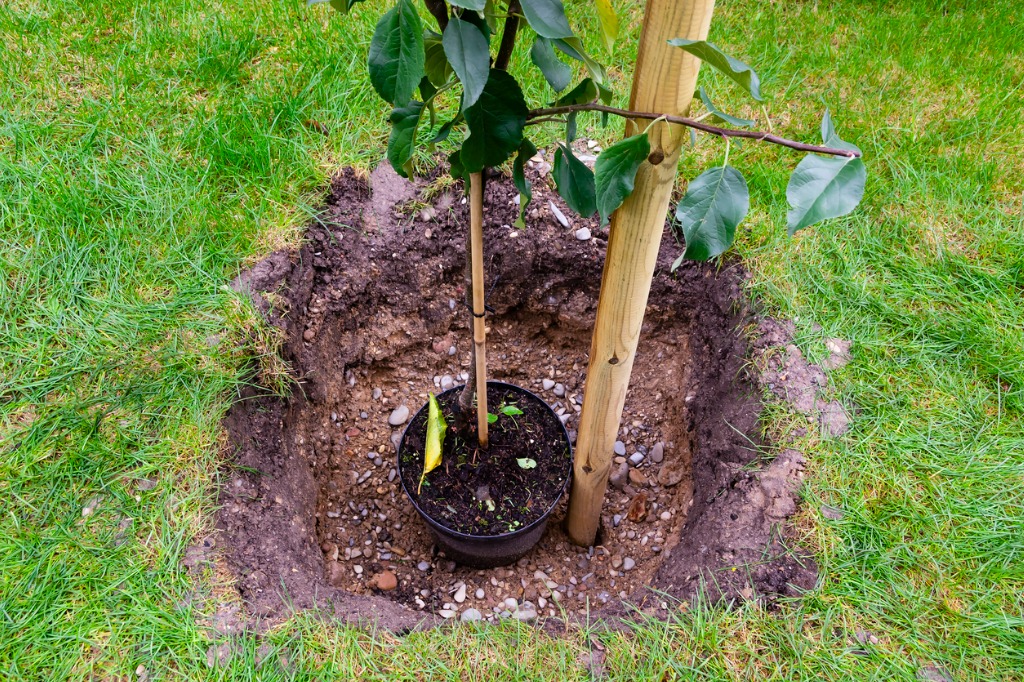
Staking Trees
Shrubs don’t need to be staked, but trees can benefit from this practice. Staking ensures the tree will remain upright while becoming established. However, most trees don’t need staking, as the trunk movement helps the tree develop. If you choose to stake your trees, remove the stakes after one growing season.
3 Steps Required For Staking Trees
1. Before staking, keep the trunk as straight as possible. You can purchase rope at the nursery or use rope from home.
2. Place two or three stakes around the tree on different sides. The stakes should be approximately 4” tall and should be placed about 10” from the trunk. Use a hose piece where the rope goes around the trunk to prevent the trunk from getting damaged.
3. Ensure the trunk is straight and tie the rope to the stakes, keeping the rope tight.
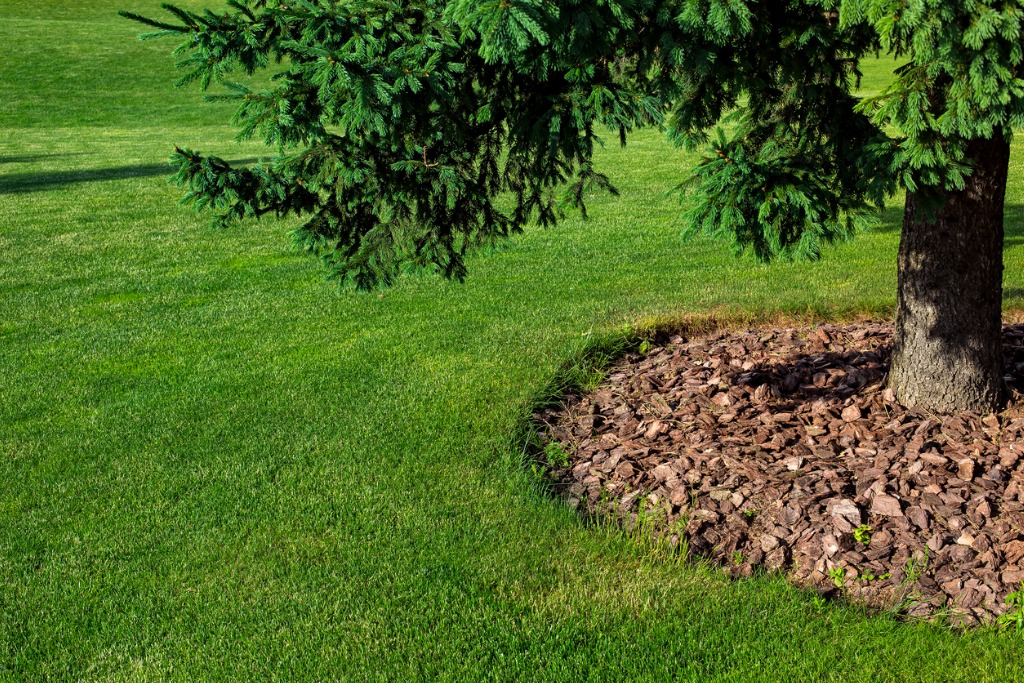
After Planting Care
Watering
Like any plant trees and shrubs must be thoroughly watered after planting. You should continue monitoring the plants for water, giving them a deep soaking each week until the ground freezes. The watering frequency will depend on rainfall and soil conditions. Put your finger or another object at least 4 inches deep in the ground to check for moisture. If the soil is feeling dry, it’s time to water.
Sprinklers and watering cans may be used, but the slow trickling of a hose is best for getting the root ball thoroughly wet. Deep and less frequent watering is ideal for promoting root growth.
Mulching
Mulch has many benefits for plants, like conserving moisture and reducing weeds. You can also improve the aesthetics of your property by applying mulch. Consider a few things before adding mulch around your trees and shrubs.
- Wood and bark chips are good mulch sources, but pine needles or shredded leaves are also effective.
- Never add plastic under the mulch, as the roots can suffocate.
- The mulch should be 2-4 inches thick and kept away from the trunk/stems of the plant.
Fertilizing
A soil test is a great tool for understanding the needs of your landscape. Plants grown in healthy soil usually don’t need fertilizer. However, you can fertilize trees and shrubs every couple of years in late fall or early spring to give the plants a head start for the growing season.
Pruning
Young trees and shrubs don’t typically need pruning for the first few years. If you notice any damaged or weak branches, they should be removed.
Winter Protection
The best winter protection occurs in spring, summer, and fall, as healthy plants are less likely to experience problems during winter. It’s best to continue watering new plants until the ground freezes, especially evergreens.
Some trees, like Maple and Honey Locust, have thin bark that sunlight can damage in winter, a condition known as sunscald. This problem creates cracked bark, typically on a tree’s south or southwest-facing part. You can prevent this problem by wrapping the trunks with tree wrap from the trunk’s base to the tree’s first branch.

Trees and shrubs can seem daunting at first, but with proper care, you’ll enjoy these plants for a lifetime.
Other Recommended Reading

- 8 Popular Evergreens To Grow
- 5 Must-Have Flowering Shrubs For Spring
- Bareroot vs Potted Plants: What Is The Difference?
- Pruning Shrubs In Winter
- Hydrangeas: Pruning For Blooms
- An Easy Guide To Fruit Tree Rootstock
- Tree Pruning Techniques & Best Practices

At Jung Seed Co, we strive to be your go-to guide for all your gardening needs. Our YouTube channel The Garden Doctor by Dick Zondag is where he provides gardening tips for all levels of gardeners. When you need reliable gardening advice, turn to the trusted experts at Jung.
View our new catalog online or browse our website for your gardening favorites. To receive info on new products, exclusive deals, and specials, be sure to sign up for our weekly email. Join our Facebook page, to discuss all things gardening!
About the Author: Matthew Olson is a professional horticulturist and garden writer. He has a bachelor’s degree in horticulture from UW-River Falls and is a certified professional with the Minnesota Nursery and Landscape Association. His enthusiasm for plants and the outdoors brought him to the green industry. He regularly writes articles about gardening for both gardeners and industry professionals. He can be reached at matt@mattolsonhorticulture.com.